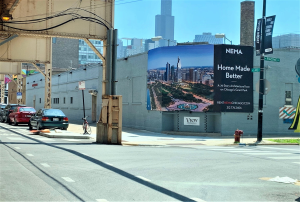In the world of localized and cost-effective marketing, inexpensive placemats ads are proving to be a hidden gem. While they may appear simple at first glance, the neuroscience behind their effectiveness reveals just how powerful they can be in influencing consumer behavior and enhancing brand recall. This blog explores how inexpensive placemats advertising taps into subconscious triggers, visual memory, and dining habits to leave a lasting impression.
Marketing professionals looking to stretch their budget without sacrificing impact will find this deep dive into the psychology of placemat ads both eye-opening and actionable.
Why Inexpensive Placemats Ads Work
In a cluttered advertising ecosystem, the most memorable brand messages are those that engage the brain beyond surface level. Inexpensive placemats ads offer uninterrupted attention during meals—a prime opportunity to connect with audiences when they are relaxed, stationary, and primed to absorb information.
What Makes Placemats Unique?
Unavoidable Placement: Right in front of the diner throughout the meal.High Dwell Time: Average mealtime ranges from 15–30 minutes.Low Distraction: Unlike digital ads, there are no competing tabs, screens, or skip buttons.
The Neuroscience Behind Brand Recall
Let’s explore the cognitive mechanisms that make inexpensive placemats advertising so effective.
Visual Encoding and Repetition
Visual memory plays a crucial role in brand recall. When a diner sees an ad repeatedly during a single sitting (as with a placemat), it reinforces the neural pathways related to that brand.
Tip for marketers: Use simple, bold visuals and consistent colors associated with your brand to take advantage of the “repetition effect” in memory formation.
The Primacy and Recency Effect
Psychology shows that people best remember the first and last things they see. Placemats naturally fall within both zones—viewed at the start of the meal (when menus arrive) and again at the end (as the bill is settled).
Smart placement strategy: Feature your brand near the center or in the corners that diners will see first.
Associative Learning
In a relaxed setting like a café or diner, the brain is more open to creating positive emotional associations. Brands that appear in this environment benefit from those subconscious emotional ties.
Application tip: Pair your inexpensive placemats ad with comforting images or local references to evoke familiarity and trust.
How to Design Effective Inexpensive Placemats Ads
The goal is to maximize cognitive engagement while minimizing visual noise. Here’s what neuroscience tells us about creating more effective placemat ads:
Use High-Contrast Colors
The brain responds strongly to contrasts—light vs. dark, red vs. green. Contrasting colors help guide visual attention toward the message you want to emphasize.
Focus on One Core Message
Too much information leads to cognitive overload. One message, one offer, and one call-to-action (CTA) significantly increases retention.
Example: “Show this placemat and get 10% off your next haircut!”
Embed a Call-to-Action That Triggers Dopamine
When someone scans a QR code or claims a reward, the brain releases dopamine. That “feel-good” reward reinforces the behavior, making the consumer more likely to remember your brand and engage again.
Why Inexpensive Placemats Ads Are a Hidden Gem for Local Brands
Despite being budget-friendly, inexpensive placemats advertising packs a punch when executed strategically. Here’s why they outperform expectations:
Budget Efficiency
Compared to digital campaigns or radio spots, inexpensive placemats ads cost significantly less per impression, especially in local or regional campaigns.
Example: A small restaurant printing 5,000 branded placemats might spend $300–$500 total, gaining repeated exposure to thousands of diners over weeks.
Geo-Targeted Impact
Placemats are hyper-local by nature. Your message reaches only the people most likely to convert—those in your community.
Real-life case study: A local dental office used a limited-time offer on placemats at a nearby breakfast diner and saw a 20% increase in new patient bookings within four weeks.
No Ad Blockers
With inexpensive placemats advertising, there’s no skipping, blocking, or scrolling. Your message is always front and center.
Who Benefits Most from Inexpensive Placemats Advertising?
If you’re wondering whether inexpensive placemats ads are right for your business, consider the following sectors that thrive on local trust and frequent exposure:
Healthcare providers (e.g., dentists, physical therapists); Real estate agents; Insurance brokers; Auto repair shops;
Gyms and wellness centers; Educational institutions
These are industries where visibility equals trust. Placemats help establish that trust in the most everyday, human way possible—during a meal.






